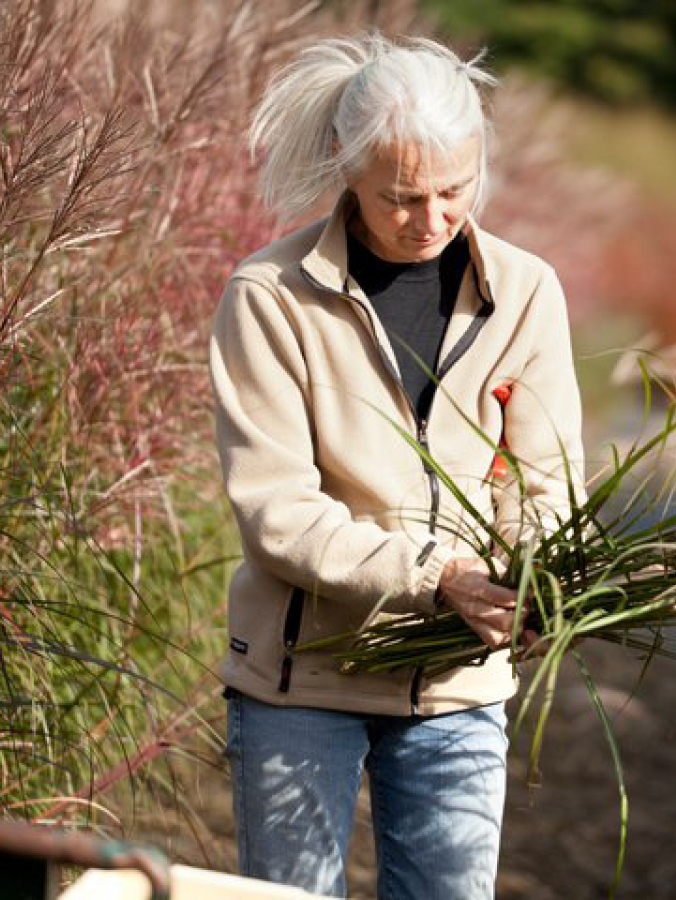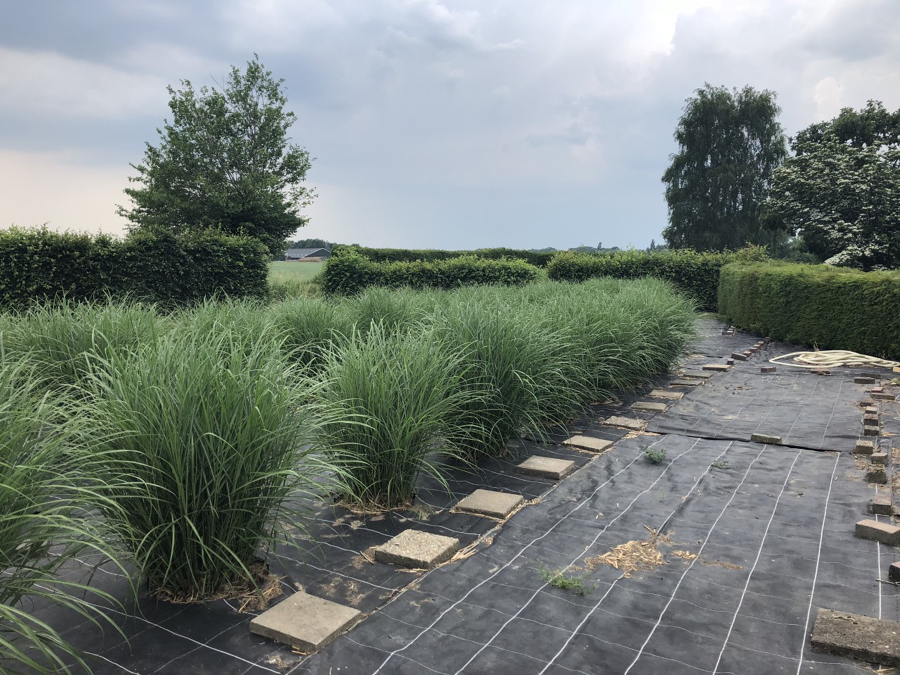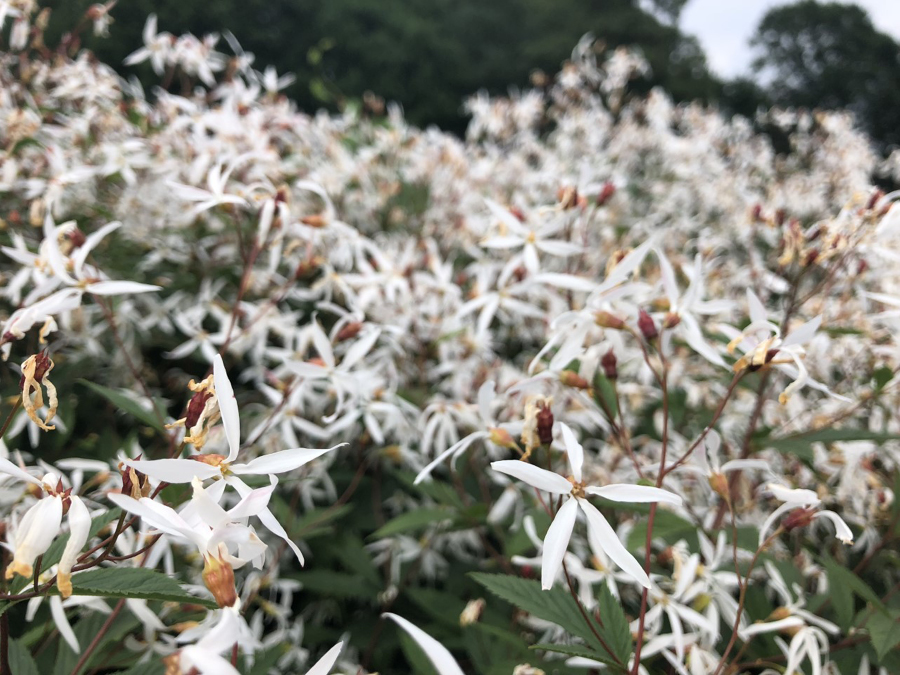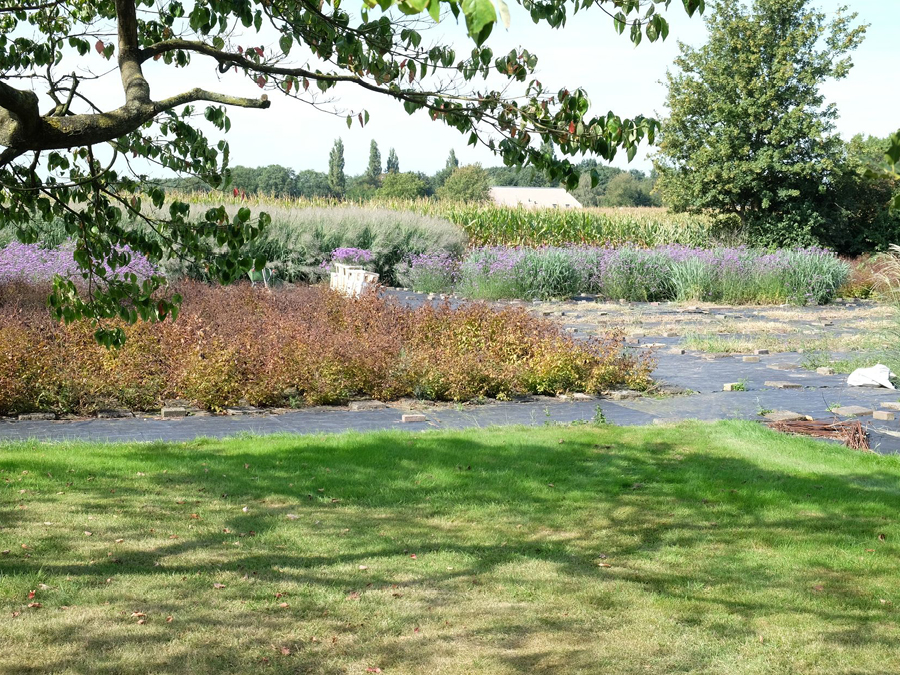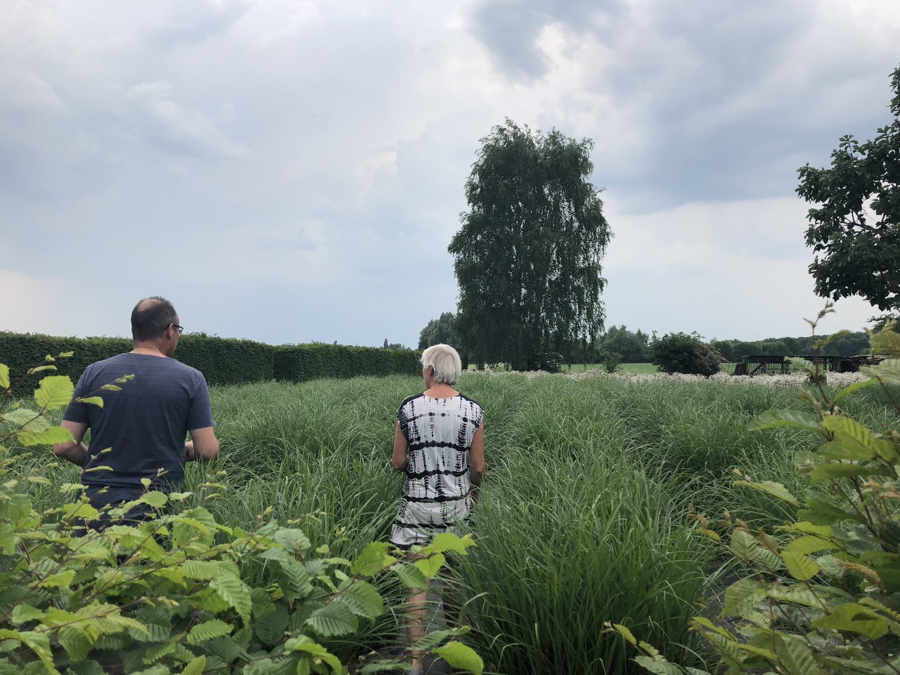Day Two
Bisselingskaat
Big proponent of organic
The organic cut flower nursery Bisselingskaat is in Wehl, a small village in the Achterhoek, a region in the province of Gelderland. Bisselingskaat, run by Liesbeth Schellekens, is a SKAL certified organic flower nursery. Liesbeth tells with appropriate pride of her organic flower cultivation. All flowers grown on her nursery are cultivated without use of pesticides or herbicides and only using organic fertilizers and with homemade compost.
Liesbeth is a big proponent of growing and using organic cut flowers, she is progressive and cares deeply about nature, a clean environment and the flowers she grows. Organic cultivation is a large challenge because in addition to optimal care for the plants, the battle to contain the weeds takes constant care and energy. On Bisselingskaat she maintains the entire nursery of 11.000 m2, [2.7 acres) by weeding and cutting. Because herbicides are not used in organic cultivation, most plants at Bisselingskaat are grown in anti-root fabric. During the summer months this allows Liesbeth to focus on the harvesting and processing of the cut flowers for the auction.
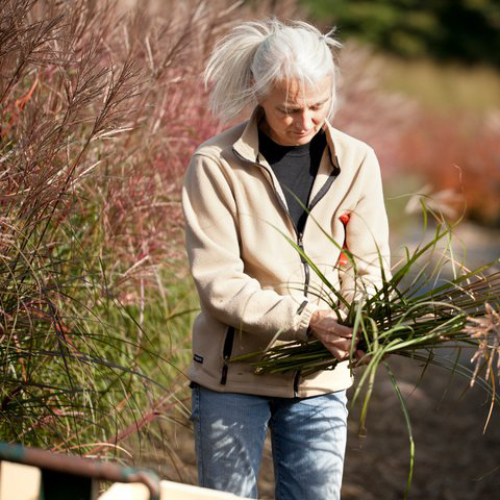
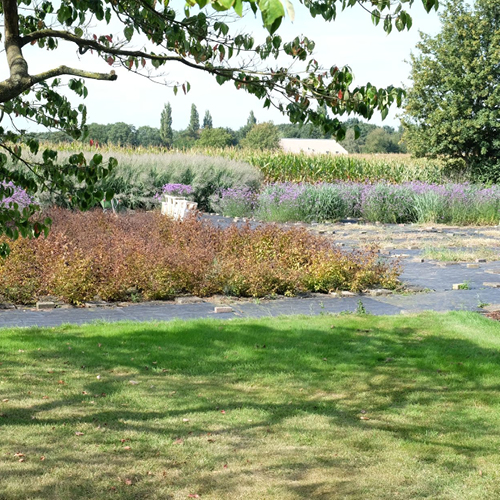
Sustainable selection
After a warm welcome and a cup of coffee we got a tour of this special bussiness. Liesbeth is the sole worker on her nursery, where she grows among others a selection of ornamental grasses, Verbena (Purpletop Vervain), Sanguisorba (Burnet), Cobaea (Cup-and-Saucer vine) and Gillenia (Indian Physic). The blooming season of the white flowering beautiful Gillenia is already over. Liesbeth now harvests the branches of Gillenia after flowering, when they have small seed buds at the end of thin stems, it is called Gillenia DECOR. With dominant trifoliolate leaves these are an attractive and strong filler in a bouquet. During our visit the Gillenia was still flowering.
Sanguisorba is a new growth at Bisselingskaat and Liesbeth has planted several varieties. It is a flower in which a rare butterfly, scarce large blue, can lay its eggs. This year several varieties of the Sanguisorba were the victim of powdery mildew, a fungus which damages leaves and stems, and therefore the production this year will be low. Growers can choose to spray plants with sulfur but Liesbeth does not take this route, choosing to keep her plants untreated. If a plant is affected she lets nature take its course and after a few years of testing she only continues with the strongest varieties. By selecting resistant and healthy varieties, Bisselingskaat contains a selection of strong varieties. In our mind this is good example of sustainable selection and growth.

Broekhof
Broekhof, supplier of Green Leaf
Consumers are becoming increasingly critical of the products they buy. There is increasing demand for sustainable and organically grown products. We also see that people become more critical about the use of environmentally harmful packaging materials, especially plastic.
Broekhof is supplier of Green Leaf, which had introduced a completely sustainable packaging line. The high-quality packaging is made from natural organic material such as decaying and agricultural waste material and biomass (this consists of non-edible plant parts). Thanks to this combination, the packaging can ben 100% compostable and can be deposited in the biodegradable refuse bin.
We will explain three of these packages for you in this article.
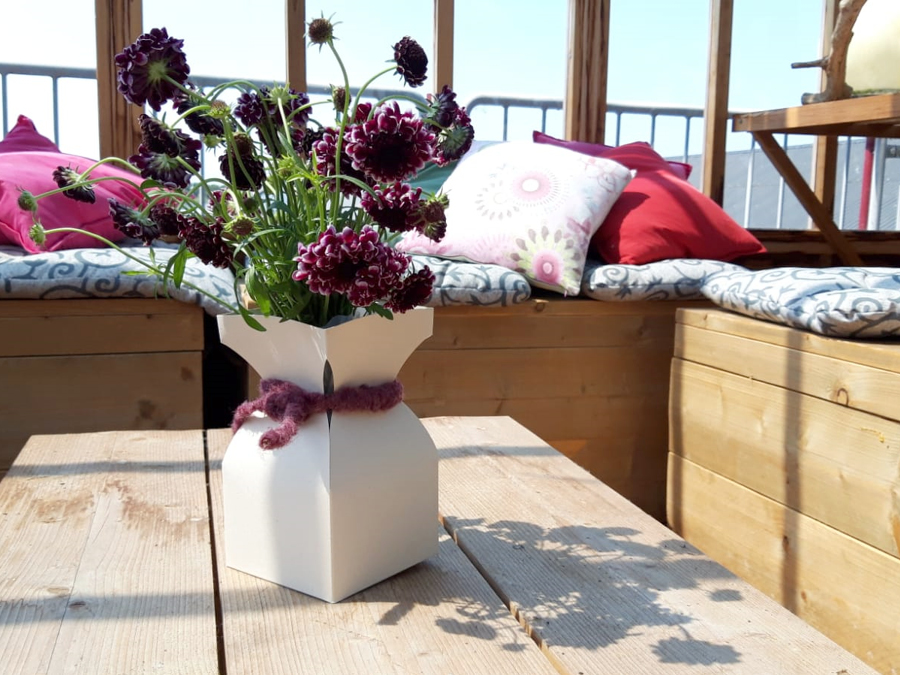
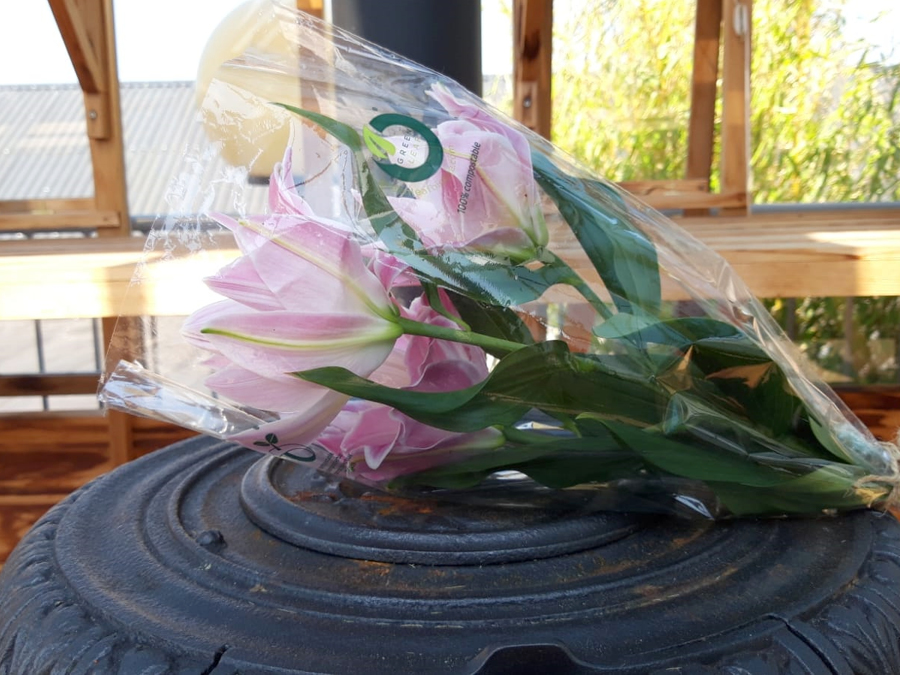
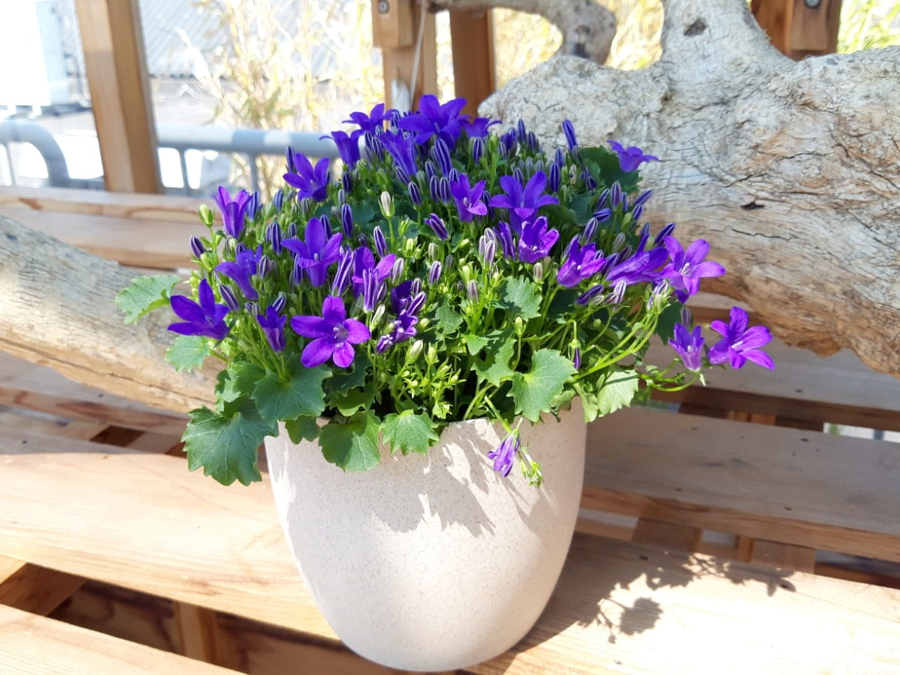
The different packages
Bouquet of Paperwise
Paperwise is cardboard or paper made from agricultural waste. You should think of the stems and leaves of for example grain and sugar cane that are not used after processing. Paperwise is 100% compostable, is produced with green energy and reduces the environmental impact by 47* compared to other types of wood fiber paper. The colour of paperwise is white and can be used perfectly for full-colour printing.
Flowersleeve
This is made of PLA (Polylactic Acid or Polyactide). PLA is one of the best known and most sustainable bioplactics, made from renewed raw materials. These are raw materials from Agri-waste and Bio-mass, such as sugar cane and corn, not at the expense of food. PLA is very suitable for flowersleeves and plantcovers, foil, tubes, covers etc. The printing of PLA film gives the same result as other foil types made from fossil fuels.
Ornamental pot of elephant grass
Elephant grass is grass that grows in various places in the Netherlands and can grow up to four meters high. Elephant grass is also used as an animal-friendly solution for goose nuisance at Schiphol Airport. Goose do not like this high grass and therefore stay away. There are possibilities to make paper, cardboard, wood and plastic from this grass and recently also ornamental pots. The products are available in their natural colour, but the paper and cardboard is absolutely suitable for full-colour printing. The advantage of the use of elephant grass is that it is produced in the Netherlands and therefore does not involve transport. The grass cleans the air, collects fine dust, causes noise reduction and takes up as much CO2 as a tree.
The possibilities with Broekhof and Green Leaf are great. The packaging is of high quality, so that your sustainable / organic flowers and plants also receive the most beautiful packaging.


